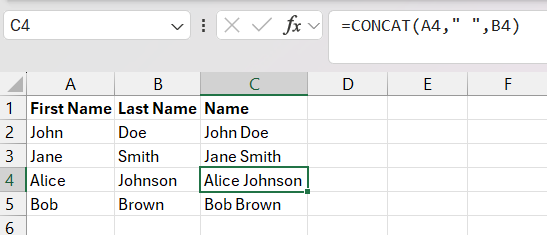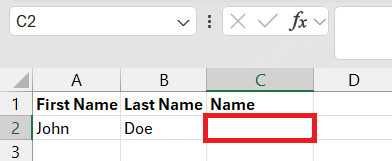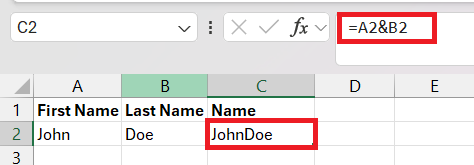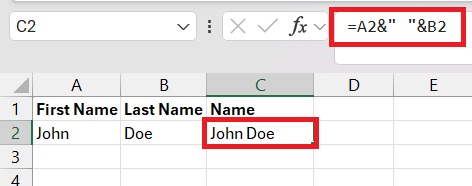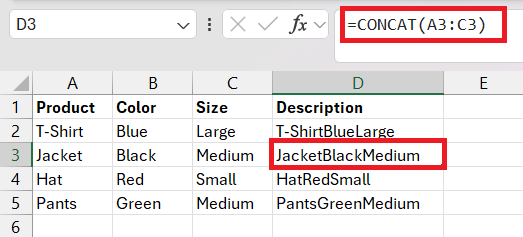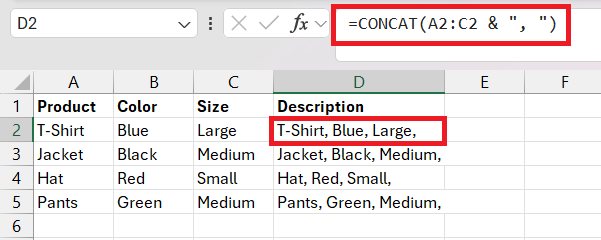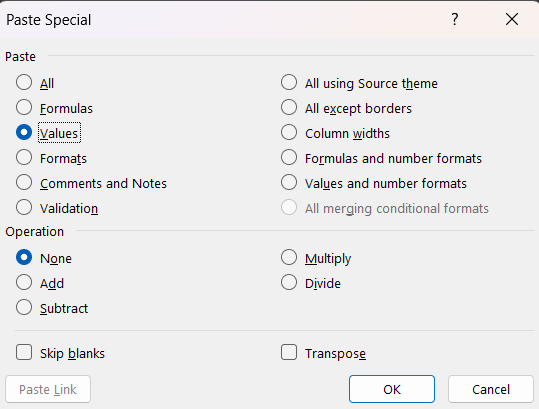Combining two columns in Excel is something I often need to do, especially when working with names, addresses, or other data that would be easier to handle in a single cell. Luckily, Excel offers several ways to combine data from two columns into one. Here’s my go-to guide on how to combine two columns in Excel, from simple formulas to more advanced tools.
Key Takeaways:
- Combining columns in Excel streamlines data management, especially for tasks like merging first and last names.
- The ampersand (&) operator and functions like CONCAT and CONCATENATE make it easy to combine cells with separators.
- Flash Fill and Power Query are powerful tools for quick and advanced data combination.
- Using separators such as spaces, commas, or dashes enhances readability in combined data.
- Preserving original data after combining columns is crucial for maintaining an editable reference.
Table of Contents
Unveiling the Magic of Excel Column Combination
Why Combining Columns Can Be a Game-Changer
Combining columns in Excel can revolutionize the way we handle data. Picture a scenario where you’ve got separate columns for first names and last names but need a full name in a single column for a report. With this process, instead of manually retyping every single entry, I can merge the columns quickly, reducing the room for human error and saving an immense amount of time.
It’s not just about convenience; for me, it opens up new opportunities for analysis, as I can then sort, filter, and search through combined data sets with ease.
How to Combine Two Columns in Excel
How to Use the Ampersand Symbol (&) Effectively
To wield the ampersand symbol (&) effectively in Excel, I would perform these steps:
STEP 1: Select an empty cell where I want the combined column output.
STEP 2: Now to combine A2 & B2 enter the formula “=A2&B2” press Enter.
STEP 3: The beauty here is that I can go further by adding spaces (” “) or other separators within quotation marks to format the combined text. If A2 held a first name and B2 a last name, =A2 & ” ” & B2 would yield a full name with a proper space in between.
The Power of CONCAT Function in Action
The CONCAT function truly shines when I need to combine data from an array of cells quickly and uniformly. Unlike the ampersand, where each cell reference is typed out, CONCAT allows me to specify a range of cells with ease.
For example, with =CONCAT(A2:C2), Excel automatically brings together the values in A2 and B2 without needing additional input for each cell.
For added nuance, I can intersperse separators like commas or semicolons by including them in quotation marks and using an array constant, for example “=CONCAT(A2:C2,”, “)”. A powerful application of CONCAT is when dealing with dynamic ranges where the number of cells to combine may change; CONCAT adapts fluidly.
Advanced Tips for Professional Excel Users
Adding Spaces and Separators Between Combined Cells
Adding spaces and separators between combined cells is crucial for creating legible and organized data. When I use the ampersand or CONCAT functions, I can customize the output by inserting spaces, commas, dashes, or any other separator needed to make the data more readable. For instance, when combining address elements, using a comma and space, =A2 & “, ” & B2, offers a neatly formatted address.
For more complex data, different separators might be suitable for different sections. For example, combining a person’s full name followed by their job title and company might use a mix of space, comma, and dash separators. Here’s how: =A2 & ” ” & B2 & “, ” & C2 & ” – ” & D2.
Preserving Original Data Post-Combination
Preserving original data after combining columns in Excel is a smart practice. It ensures I have an untouched reference to revert back to or use for additional calculations. One method I employ is using references to the original cells within my formulas. This technique allows the combined column to dynamically update if changes are made to the original data, without altering the sources themselves.
Another approach is to copy the combined data and use “Paste Values” to retain the merged information while disconnecting it from the original cells. This way, if the source data is deleted or modified, my combined data remains unaffected.
FAQs About Combining Columns in Excel
How can I merge two columns in Excel?
To merge two columns in Excel, I use the CONCATENATE function or the CONCAT function in newer versions. For instance, to merge Column A and Column B, I insert the formula =CONCATENATE(A2, B2) or =CONCAT(A2, B2) into a new column where I want the combined data to appear. If I require a space or a different separator, I simply add it in quotes within the formula.
Can I Combine Columns with Different Data Types?
Yes, I can combine columns with different data types in Excel. For instance, text and numbers can be mixed using the CONCATENATE function, like =CONCATENATE(“Order: “, A2, “, Quantity: “, B2), which combines a text string with two different types of data from cells A2 and B2. Excel automatically converts all values to text during the concatenation process.
How Do I Combine Columns Without Losing Data?
To combine columns in Excel without losing data, I use formulas such as CONCATENATE or CONCAT. After writing the first formula like =A2 & ” ” & B2, I drag the Fill Handle down to copy it to other cells. Then, I convert the formula results to values by copying the combined column and pasting it using ‘Paste Special > Values’ to avoid losing combined data if the original columns change.
What’s the Difference Between CONCAT and CONCATENATE?
The difference between CONCAT and CONCATENATE lies in Excel’s evolution. CONCATENATE is an older function that allows up to 255 text items to be joined, while CONCAT, introduced in Excel 2016, offers a more streamlined approach and can combine text from ranges, not just individual cells. CONCAT is recommended for its simplicity and because CONCATENATE might not be supported in future Excel updates.
How do you CONCATENATE two cells in Excel?
In Excel, to CONCATENATE two cells, click on the cell where I want the combined result, then type the formula =CONCATENATE(A1, B1), replacing A1 and B1 with the references of the cells I wish to join. If I need to add a space or other separators, I include them in quotes within the formula, like =CONCATENATE(A1, ” “, B1). After pressing Enter, the two cells’ contents are combined.
John Michaloudis is a former accountant and finance analyst at General Electric, a Microsoft MVP since 2020, an Amazon #1 bestselling author of 4 Microsoft Excel books and teacher of Microsoft Excel & Office over at his flagship MyExcelOnline Academy Online Course.

